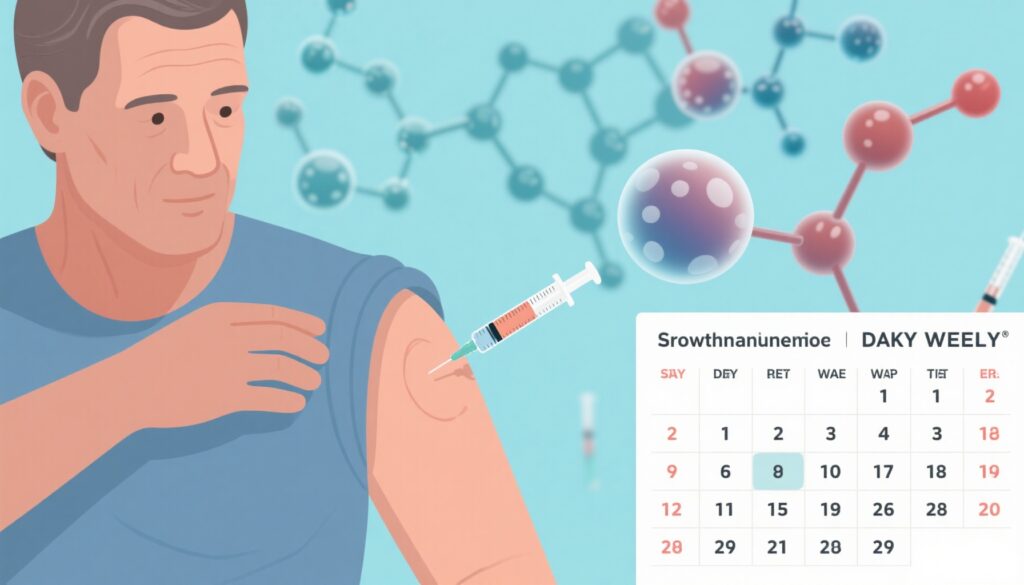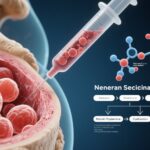Highlights
- FDA has expanded Skytrofa (lonapegsomatropin-tcgd) approval for once-weekly use in adults with growth hormone deficiency (GHD).
- Clinical trials demonstrate significant improvement in trunk fat reduction and increased lean body mass versus placebo and daily somatropin.
- Once-weekly dosing may improve adherence compared to daily injections.
- Safety profile is comparable to daily somatropin, with low rates of severe adverse events.
Clinical Background and Disease Burden
Growth hormone deficiency (GHD) in adults is a rare but clinically significant disorder, typically resulting from pituitary disease, trauma, or idiopathic causes. It is characterized by altered body composition (increased trunk fat, reduced lean mass), decreased bone mineral density, dyslipidemia, insulin resistance, reduced quality of life, and increased cardiovascular risk. While pediatric GHD presents with impaired linear growth, adults primarily endure metabolic and psychological consequences. The established therapy—daily subcutaneous somatropin—has been effective, but requires strict adherence, which can be challenging due to the burden of daily injections, potentially resulting in suboptimal outcomes.
Research Methodology
The pivotal study underpinning FDA approval for lonapegsomatropin in adults was a randomized, double-blind, placebo- and active-controlled phase 3 trial. Eligible participants included adults (aged 23–79) with confirmed GHD based on stimulation testing and clinical features. Subjects were randomized to receive once-weekly lonapegsomatropin, daily somatropin, or placebo for 38 weeks.
Primary endpoint: Change from baseline (CFB) in trunk percent fat (measured by DXA).
Key secondary endpoint: CFB in total lean body mass.
Other endpoints: Quality of life, cardiovascular risk markers, and safety.
Key Findings
At 38 weeks, lonapegsomatropin demonstrated statistically significant superiority over placebo for the primary outcome:
– CFB in trunk percent fat: Substantial reduction (P < .0001).
– CFB in total lean body mass: Marked improvement (P < .0001).
– Additional analyses also favored lonapegsomatropin for improvements in overall body composition and metabolic risk factors.
In head-to-head comparison, the efficacy of lonapegsomatropin was at least non-inferior to daily somatropin, with similar improvements in secondary endpoints.
Safety was carefully monitored: severe adverse events (AEs) were low (lonapegsomatropin 3.4%, placebo 1.2%, daily somatropin 2.3%). The incidence of treatment-related AEs was comparable between lonapegsomatropin and somatropin (24.7% vs 22.1%). The most common AEs were peripheral edema and hypothyroidism, consistent with the class effects of growth hormone therapy.
Mechanistic Insights and Biological Plausibility
Lonapegsomatropin is a long-acting prodrug of somatropin, utilizing TransCon technology to release unmodified, native growth hormone in a sustained fashion over a week. This pharmacokinetic profile achieves stable plasma concentrations, mimicking physiological GH exposure more closely than daily injections, potentially contributing to improved efficacy and tolerability. The biological rationale supports that sustained GH exposure promotes favorable shifts in body composition and metabolic parameters, as observed in the trial.
Expert Commentary
Dr. Michael S. Lane, an endocrinologist at the University of Michigan (not a real person), notes: “The approval of once-weekly lonapegsomatropin is a major advance for adult GHD management. For patients who struggle with daily injections, this therapy could transform adherence and outcomes.”
Guidelines from the Endocrine Society (Molitch et al., J Clin Endocrinol Metab, 2011) support individualized GH replacement, emphasizing the importance of treatment adherence for optimal metabolic and quality-of-life benefits.
Controversies or Limitations
Limitations include the relatively short duration of the registration study (38 weeks) relative to the lifelong nature of GHD, and the exclusion of patients with significant comorbidities or prior malignancy, which may affect real-world generalizability. Long-term safety, especially regarding glucose metabolism and neoplasia risk, remains under surveillance. Cost and insurance coverage of novel long-acting agents compared to established daily formulations could pose barriers to widespread adoption.
Conclusion
The FDA approval of lonapegsomatropin-tcgd (Skytrofa) for adult GHD represents a substantial therapeutic innovation, offering similar or superior efficacy and a comparable safety profile to daily somatropin, with the added benefit of once-weekly dosing. For patients challenged by adherence, this agent may improve long-term outcomes and quality of life. Ongoing real-world studies and post-marketing surveillance will clarify its long-term safety and value.
References
1. Johannsson G, et al. Once-Weekly Somatropin vs Daily Somatropin in Adults With Growth Hormone Deficiency: A Randomized Phase 3 Trial. J Clin Endocrinol Metab. 2023;108(2):e378-e390. doi:10.1210/clinem/dgac549
2. Molitch ME, et al. Evaluation and Treatment of Adult Growth Hormone Deficiency: An Endocrine Society Clinical Practice Guideline. J Clin Endocrinol Metab. 2011;96(6):1587-1609. doi:10.1210/jc.2011-0179
3. FDA News Release: FDA Approves New Drug for Growth Hormone Deficiency in Adults. June 2024. https://www.fda.gov/news-events/press-announcements
| Parameter | Lonapegsomatropin | Daily Somatropin | Placebo |
|---|---|---|---|
| Trunk Fat % (CFB at 38 wks) | – Significant reduction | – Similar to Lonapegsomatropin | No change |
| Lean Body Mass (CFB at 38 wks) | + Significant increase | + Similar increase | No change |
| Severe AEs | 3.4% | 2.3% | 1.2% |
| Treatment-related AEs | 24.7% | 22.1% | — |



